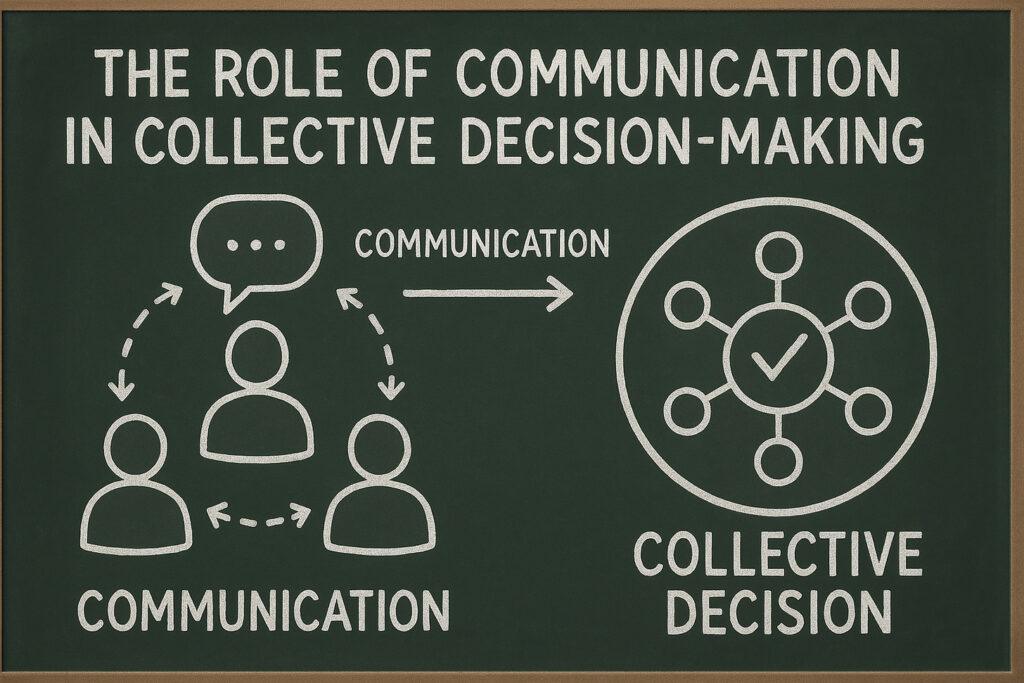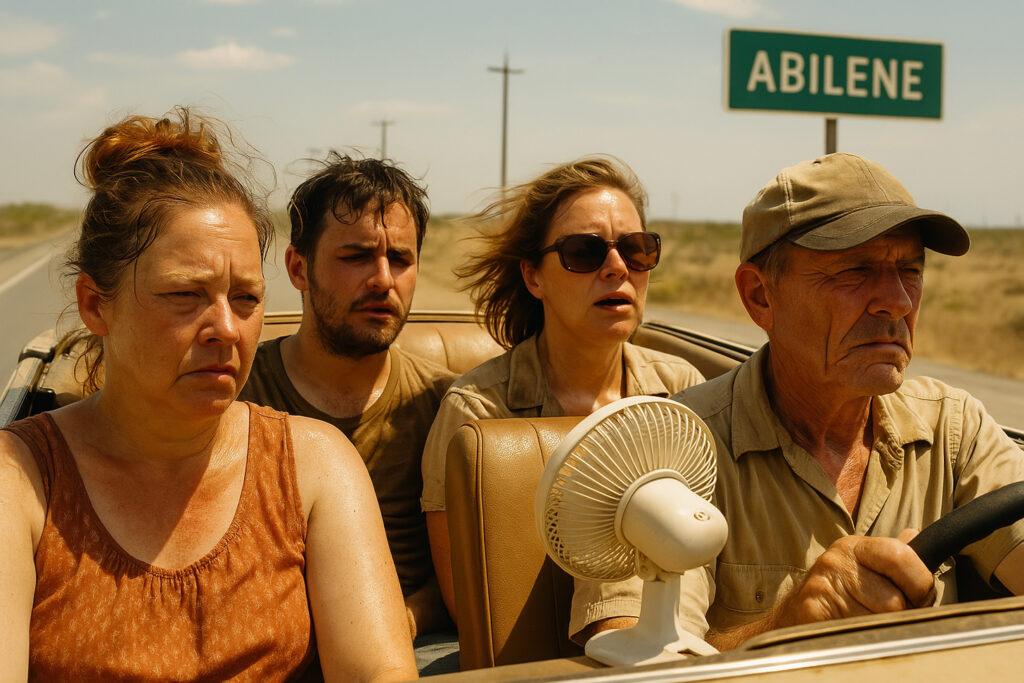Have you ever agreed to something you didn’t want just to keep the peace? That’s the core idea behind the Abilene Paradox mental model, a concept that explains why groups often make decisions nobody actually supports. It all started with a family road trip gone wrong—a real-life story shared by Dr. Jerry B. Harvey, a management expert. He described how his family ended up on a miserable 100-mile drive to Abilene, Texas, despite no one truly wanting to go. Sound familiar?
The Abilene Paradox isn’t about conflict—it’s about silence. Teams or groups assume other members want a certain path, so they nod along to avoid rocking the boat. Fear of disagreement or looking foolish keeps individuals from speaking up. The result? Wasted time, frustration, and decisions that satisfy no one in the group. This issue often stems from groupthink, where the desire for harmony overrides realistic perspectives on actions.
In this article, we’ll break down how the Abilene Paradox works, why it matters in business environments and relationships, and practical ways to avoid it. You’ll learn how open communication and asking simple questions like “What do you really think?” can transform group dynamics and prevent a trip to Abilene.
Key Takeaways
- The Abilene Paradox mental model occurs when groups agree to actions no one individually supports.
- Fear of conflict or misunderstanding others’ opinions drives poor decisions.
- Dr. Harvey’s family trip story shows how easily teams fall into this trap.
- It’s not about managing disagreements—it’s about unspoken consensus.
- Solutions include encouraging honest feedback and clarifying assumptions.
- Learn more about mental models to improve decision-making skills.
Introduction to The Abilene Paradox Mental Model

Picture a family trip everyone regrets but no one objected to—how does that happen? This exact scenario unfolded in 1974 when Dr. Jerry B. Harvey, a management professor, watched his relatives agree to a sweltering drive to Abilene, Texas.
Though each person privately hated the idea, they assumed the group wanted it. His story became the cornerstone of his book, “The Abilene Paradox and Other Meditations on Management.”
Defining the Paradox
The Abilene Paradox mental model occurs when teams make choices nobody truly supports. It’s not about clashing opinions—it’s about silence. People hide their true preferences to avoid conflict, creating a false consensus. Imagine your team picks a project deadline everyone dreads but nods along to. Sound familiar?
Why does this happen? Fear of rocking the boat. Members guess what others want instead of asking. Dr. Harvey’s road trip shows how easily communication breaks down. No one said, “Let’s stay home,” because they worried about seeming disagreeable.
| Situation | Assumed Group Preference | Actual Individual Preference |
|---|---|---|
| Family Trip | “Everyone wants to go” | “I’d rather stay” |
| Office Meeting | “The team likes this plan” | “This won’t work” |
| Team Lunch | “Let’s order pizza” | “I’m allergic to cheese” |
Breaking this cycle starts with honesty. Leaders must ask, “What do you really think?” and make it safe to answer. Ever been in a similar situation? The fix isn’t complicated—just courage to speak up.
Grasping The Abilene Paradox Mental Model

Why do teams sometimes charge ahead with plans nobody wants? The answer lies in a dusty Texas afternoon from 1963. Dr. Jerry B. Harvey’s family found themselves crammed into a non-air-conditioned Buick, driving 53 miles to Abilene on a 104°F day. Each person thought the others wanted the trip—but everyone secretly wished they’d stayed home.
Origins of The Abilene Paradox Mental Model
The now-famous road trip started in Coleman, Texas. Dr. Harvey’s father-in-law casually suggested the drive, assuming the group was bored. No one objected—not even when the car’s vinyl seats burned their legs. Why? Cultural expectations and time pressure made them prioritize harmony over honesty.
Key Psychological Mechanisms
Two forces fuel these misguided decisions:
- Mindreading: Assuming you know what others want without asking
- Conflict avoidance: Choosing silence over potential disagreement
| Scenario | Assumed Group Choice | True Feelings |
|---|---|---|
| Team Project Deadline | “We’re all excited!” | “This timeline is impossible” |
| Family Vacation Plans | “Beach sounds great!” | “I hate sand” |
| Office Software Switch | “New system works!” | “This slows me down” |
Notice a pattern? Groups often mistake silence for agreement. Dr. Harvey’s anecdote shows how easily communication breaks down when fear overrides logic. The fix? Leaders must create spaces where “I disagree” feels safe to say.
The Role of Communication in Collective Decision-Making

Why do smart teams make bad choices together? Often, it’s not the idea that’s flawed—it’s the communication. When individuals don’t speak up, groups drift toward decisions that leave everyone unsatisfied, exemplifying the abilene paradox.
Imagine a team meeting where someone suggests a tight deadline. Heads nod, but inside, every member’s thinking: “This won’t work.”
Barriers to Open Dialogue
Silence isn’t always golden. In teams, it often masks fear. People stay quiet to avoid conflict or judgment. For example, a manager might say, “Let’s launch this Friday!” The team agrees—even though they know the code isn’t ready.
Why? They assume others support the plan, illustrating the abilene paradox where group members fail to express their true perspectives in a safe environment. This lack of open communication can lead to poor decisions, and it’s essential for individuals to feel comfortable sharing their thoughts to avoid a trip to abilene.
| Situation | Communication Barrier | Outcome |
|---|---|---|
| Team Meeting | Unspoken doubts | Missed deadlines |
| Family Dinner Plans | Fear of disagreement | Restaurant no one likes |
| Workplace Software Update | Groupthink | Inefficient tools adopted |
Leaders shape the environment. If they dismiss concerns, feedback dries up. But when they ask, “What’s the downside?” honesty flourishes. Think of a teacher who says, “No wrong answers here.” Suddenly, hands shoot up.
Small steps make a difference. Start meetings with, “Tell me one thing we’re missing.” Or write ideas anonymously. Ever seen how Post-it notes free people to share opinions? Breaking groupthink starts with making it safe to disagree.
Mitigating the Abilene Paradox in Companies

Imagine a team meeting where everyone nods, but inside, they’re screaming “no.” How do you stop this silent sabotage? The fix lies in building trust and redesigning how teams share ideas. Let’s explore proven methods to surface hidden doubts and align decisions with reality.
Encouraging Honest Expression
Start by making dissent safe. One tech company uses anonymous surveys before big votes. Why? People share opinions without fear of backlash. Another trick: ask, “What’s one reason this might fail?” during meetings. It flips the script from defense to problem-solving, encouraging open communication among team members.
Leaders set the tone. A manager at a retail chain shares her own doubts first. “I’m unsure about this supplier—what do you think?” This vulnerability gives others permission to speak up and share their perspectives. Simple, right?
Deming’s Fear-Free Framework
Quality guru W. Edwards Deming argued that fear corrupts work outcomes. His System of Profound Knowledge offers four fixes:
| Component | Action | Result |
|---|---|---|
| Psychology | Train leaders to listen | Reduced silence |
| Systems Thinking | Map decision processes | Clearer ownership |
| Knowledge Theory | Test ideas in small cycles | Faster learning |
Try PDSA (Plan-Do-Study-Act) cycles. A hospital team tested new shift schedules for two weeks. Feedback showed 70% hated it—so they pivoted.
No doomed groupthink, just data-driven choices. This is a crucial action to avoid the trip Abilene, where a group may follow a course that no member truly supports.
Remember, the goal isn’t consensus—it’s clarity. When people trust the process, they’ll tell you the truth before the wheels fall off. This way, each member feels empowered to share their insights.
Conclusion
How many decisions does your team regret making together? Dr. Jerry Harvey’s dusty family car ride shows how easily groups choose paths nobody wants. Fear of speaking up—not disagreement—fuels these flawed outcomes. Teams assume they know others’ views, while members stay silent to avoid conflict. This lack of action can lead to a misguided course.
Great decisions start with honest dialogue. Leaders must create safe spaces where “no” feels acceptable. Try anonymous polls or quick feedback rounds. W. Edwards Deming proved that fear-free environments lead to better results. Small tests, like piloting ideas before full rollout, reveal hidden concerns.
Think about your last group choice. Did everyone truly agree? Next time, pause and ask: “What aren’t we saying?” Simple changes—like rotating meeting speakers or using “devil’s advocate” roles—can transform dynamics.
Your team’s success depends on hearing all voices, not just the loudest. Start today: share one honest opinion in your next discussion. Watch how truth reshapes outcomes at work and home.


